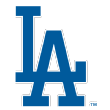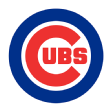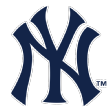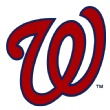Like the Chicago Cubs going into last season, the Houston Astros enter the 2018 season as the favorites to win the World Series and become the first team to repeat since the 1998-2000 Yankees. But as we talked about in this space last year, there's a lot that can go wrong, which is why, over the past 40 years, only four World Series championships were earned by the reigning champ (the others were the 1993 Blue Jays and 1978 Yankees).
The ZiPS projections give the Astros a 14.4 percent chance of winning the World Series. As preseason projections go, it's hard to start with a probability much better than that given how MLB's postseason is structured and just how the game of baseball works. A team that enters four consecutive seasons with a 14.4 percent shot at winning the World Series is still more likely than not (54 percent) to get completely shut out of the championship.
Houston looked like a juggernaut on the way to 101 wins in 2017, never relinquishing the division lead after April 12th. Even a midseason spell during which pretty much every starting pitcher was injured -- the Astros ended up with zero ERA crown qualifiers -- wasn't enough to ever reduce the team's AL West cushion to 10 games.
But when any team wins 101 games, it's likely that a lot more went right than wrong. More 101-game winners are lucky 95-win teams rather than unlucky 107-win ones. And right now, ZiPS projects six other teams to have at least a 5 percent chance of winning the World Series. The computer projects roughly a 63 percent chance that the World Series winner in 2018 is one of these six teams, so it's more likely than not that one of them will be this year's baseball regicide.
 Cleveland Indians: 14.0 percent chance at winning the World Series
Cleveland Indians: 14.0 percent chance at winning the World Series
ZiPS projects the Astros to have a relatively easy path back to the playoffs, with an 83.9 percent chance of winning the division as the rosters stand as of Sunday and an additional 10.6 percent probability of a wild card if they falter in the AL West. But there's one team with an even easier projected shot at winning their division: the Indians at 88.2 percent. While the Cubs should be the happiest team about the Cubs signing Darvish, Cleveland ought to be the second-happiest team in baseball, given that the only other competitive team in their division, the Twins, was in the running for his services. Not landing Darvish limits that team's upside in 2018 at least.
Also making Cleveland dangerous competition is how well the team's pitching is configured for playoff short series, with a disproportionate percentage of the team's value tied up in the team's frontline talent in the front few starters and front few relievers. You can win a playoff race on depth, but you win a short series on height, as it were.
 Los Angeles Dodgers: 13.1 percent chance
Los Angeles Dodgers: 13.1 percent chance
The Dodgers weren't exactly all that far from being the 2017 champion, quite likely the winner if they had just received a single good Yu Darvish series start instead of none. While Houston's rotation projects to be a strength, giving them the No. 3 rotation compared to the Dodgers at No. 2 in the projections, even the acquisition of Gerrit Cole is no guarantee. Cole has almost five full seasons in the majors and while his best season, a 19-8, 2.60 year in 2015 that saw him put up a 149 ERA+ and 4.5 WAR to earn significant Cy Young support, he's never had another season anywhere near that level. His second-best ERA+ season so far is 111, which is solid, but not ace-level.
Houston's rest-of-rotation is full of upside, but no guarantees. Verlander has been very up-and-down over the last five seasons and while both the computer and I are on the "up" side for Verlander in 2018, it's not a sure thing. Charlie Morton's crazy reinvention as a power pitcher has been a good development, but he also has a long injury history. Lance McCullers Jr. and Dallas Keuchel have both have recent injury issues and the offense won't be quite as strong as 2017 -- the average Astro position player starter hit his 66th percentile for projected performance last year -- so the team may suffer more if there's a repeat of the 2017 injury doldrums.
 Chicago Cubs: 11.8 percent chance
Chicago Cubs: 11.8 percent chance
It has become trendy to talk about the Cubs as if they're a team on the downswing and while it's hard to match the 103 wins from 2016, this storyline has become overemphasized. Sure, the Cubs only won 92 games in 2017, but that's 92 wins despite disappointing performances from most of the rotation, Ben Zobrist, Addison Russell, Kyle Schwarber and Jason Heyward. You can anticipate bounce-backs from some of this group, especially from the younger players, to which you can add a full season of Jose Quintana and the addition of Darvish.
While I'm not as crazy about the Cubs' pitching depth (or outfield depth) as that of the Astros or Dodgers, if they manage to get back to the playoffs with their rotation intact, they match up very well against either the Dodgers or the Astros. Let's put it this way: the top ZiPS comps for the front four of the team's rotation, at similar points in their careers, is Greg Maddux, Tom Glavine, Andy Pettitte and Tim Hudson. Who wouldn't want to go to war with that group?
 New York Yankees: 11.0 percent chance
New York Yankees: 11.0 percent chance
The only reason that this projection is this low for the Yankees is that they project to have better second-place competition, at least in the projections, than any other projected first-place team in baseball. With their 65.1 percent projected division title probability in the AL East, the Yankees obviously have a legitimate regular-season fight against the Red Sox to win. But when they actually do win the division, ZiPS projects them to have the highest World Series probability in baseball. Contrary to conventional wisdom, top pitching draws even with top hitting and the Yankees are the least likely team to lose a lead in baseball, with the best bullpen that ZiPS has ever projected, going back to its creation 15 years ago (and it's not even particularly close).
The Yankees also have the best farm system of any team here, by Keith Law's updated farm system rankings. That gives the Yankees more ammunition to make more roster upgrades this summer.
 Washington Nationals: 7.3 percent chance
Washington Nationals: 7.3 percent chance
A big drop-off to the Nationals in probability here, in large part because ZiPS sees the Nationals as having significant weak spots at catcher, first base, center field and the back of their rotation. In addition, Adam Eaton does carry some additional risk after essentially missing an entire year because of injury.
But what's key here is that the Nationals still can remedy these things, and on some of them it may simply be that ZiPS is being too pessimistic. ZiPS is down on Ryan Zimmerman -- and he was quite mediocre from June to August, a large stretch of the year -- but it may be too far down on him given the difficulty in to gauging just how much performance was lost from his playing through some nagging injuries in recent years. ZiPS is assuming Washington is conservative about giving Victor Robles the full-time shot in center field; if the team is more aggressive, that projection gets better (and has significant upside).
Perhaps most importantly, Washington probably hears the clock ticking a bit more acutely than the other teams on this list. Bryce Harper, Daniel Murphy and Gio Gonzalez are free agents after the season, Anthony Rendon after 2019, and Stephen Strasburg could opt out after 2019 if he thinks he can beat the four years and $100 million he'd have remaining at that point.
What this means is that the Nationals have incentives to go all-in, and perhaps even aggressively trade off the farm system for short-term improvements that make the team scarier in 2018 than they appear right now on paper.
 Boston Red Sox: 5.7 percent chance
Boston Red Sox: 5.7 percent chance
Like the Indians, the Red Sox have an impressive front end of their rotation if David Price remains healthy, with a Chris Sale and Price tandem being as scary as any pair in baseball. ZiPS projects the Red Sox to have one of the higher floors as well, with much of the team's top talent -- Sale, Mookie Betts, Andrew Benintendi, Jackie Bradley Jr., Rafael Devers and Xander Bogaerts -- all being on the sunny side of 30, and generally closer to their mid-20s. None of this takes into account the Red Sox are heavily involved in the J.D. Martinez race and that move would in fact partially address one of the team's most significant holes -- below-average players at first base and DH. Put Martinez in Fenway, and the Red Sox's shot gets bumped up to 8.0 percent.
